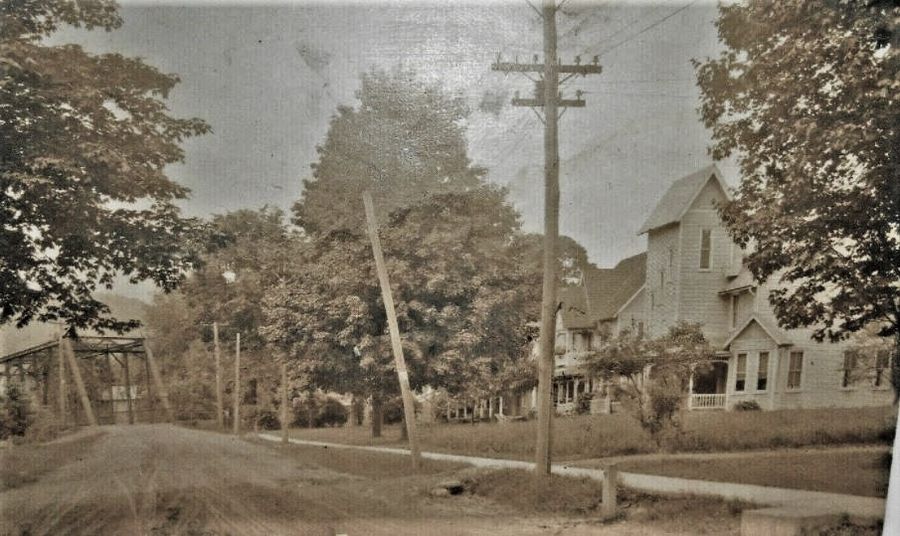Williamsport, PA, c.1920. Residential Electric Service Pole Lines, Transformer.
By Joe Maurath, Jr.; posted December 18, 2021
View Original: Click to zoom, then click to magnify (905 x 539) 159KB

|
Residential electric distribution transformers like you see in this photograph converted either 1,100 or 2,200 volts from the primary lines to about 100-110 volts on the secondary for connections to customers. These early transformers were made from cast iron and had copper windings inside. Electric utility companies around 1910 were beginning to realize that much energy was lost by single transformers serving only one or two customers. Improved transformer designs soon began to take place whereby larger-capacity transformers became available and with reduced "core losses"; much improving electric distribution efficiency within the systems that upgraded. These energy savings contributed to lower electric rates and promoted the popular use of newly-available electrical appliances. |